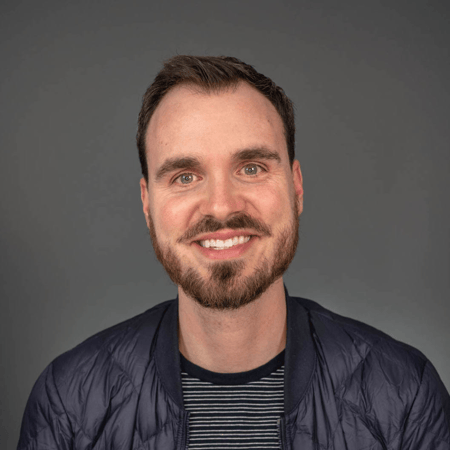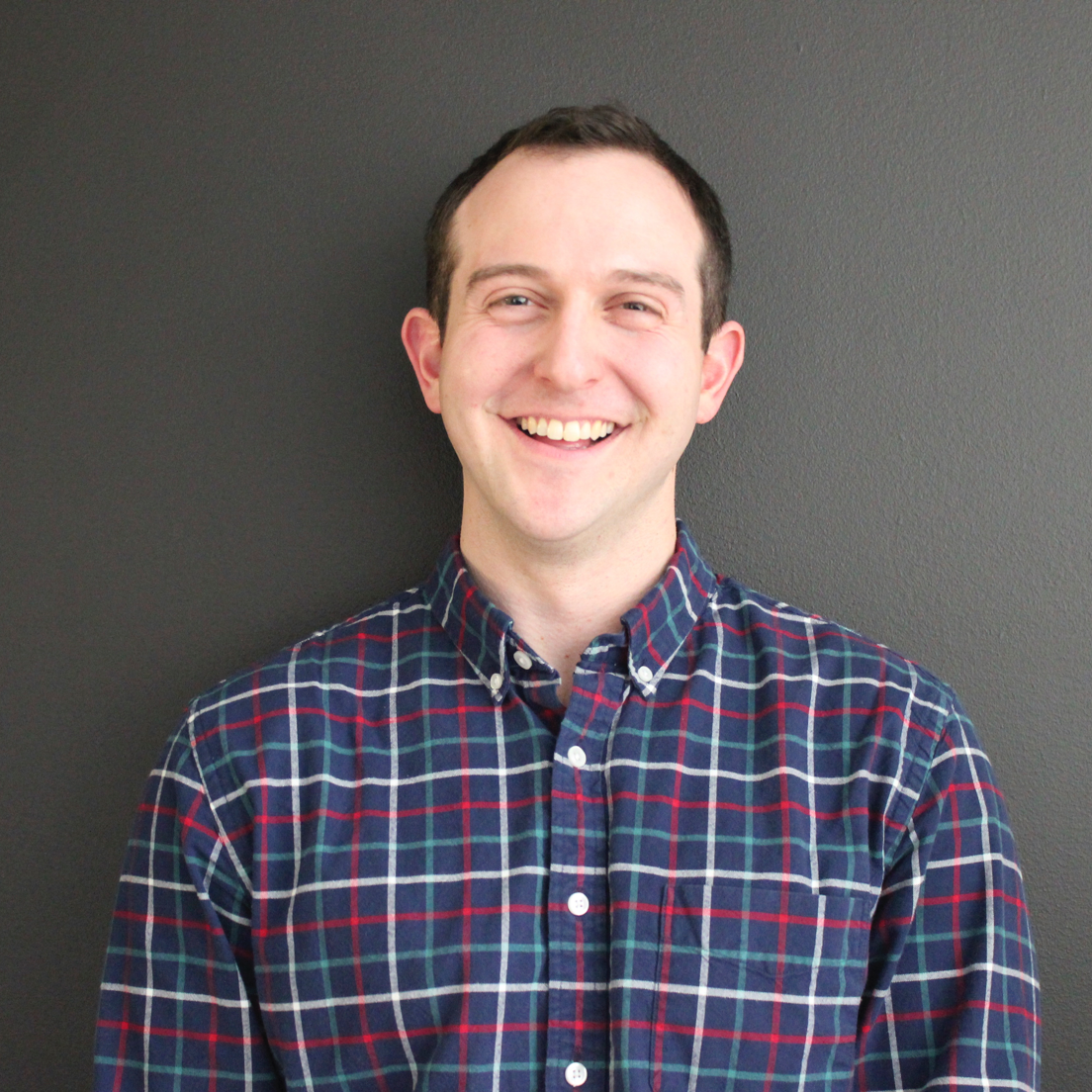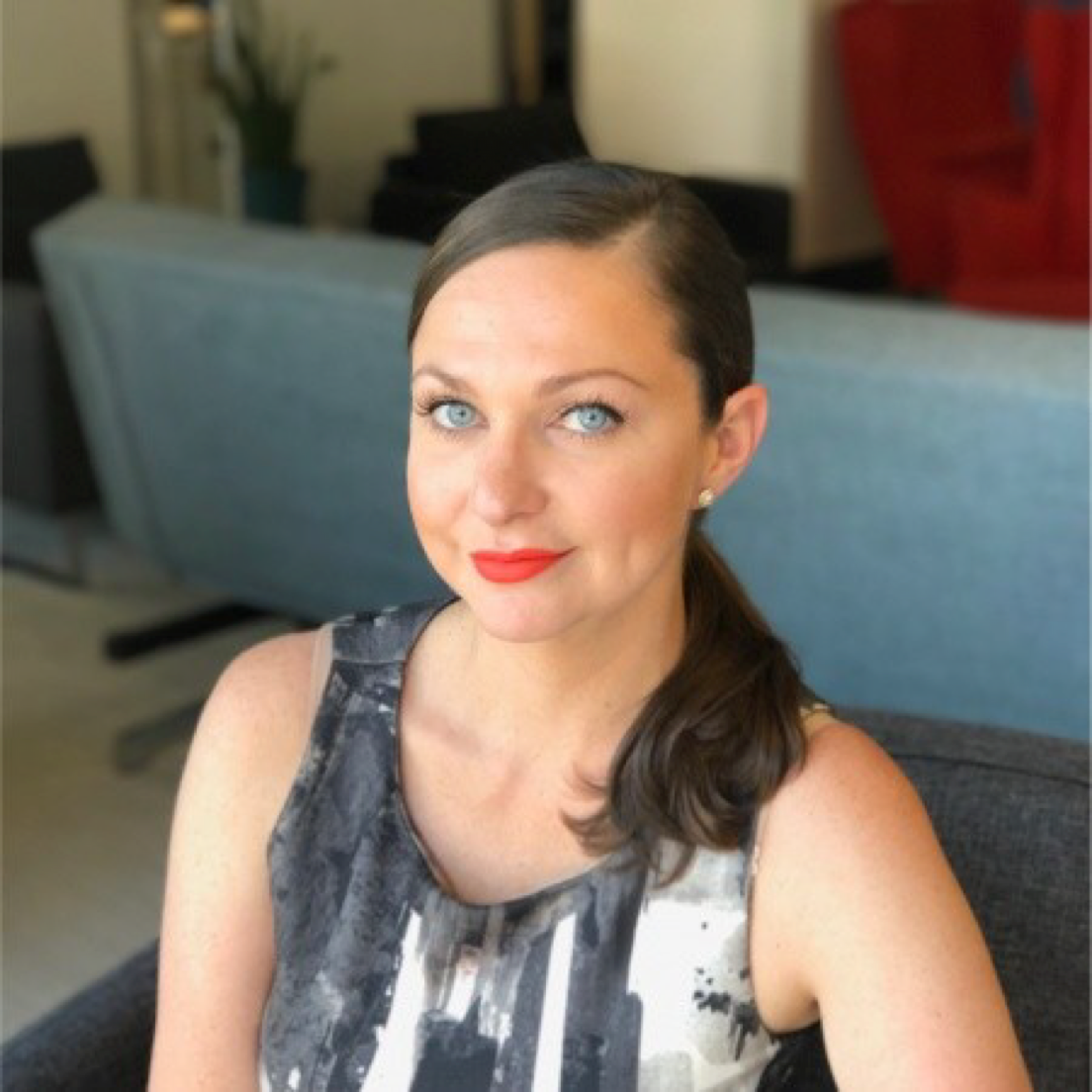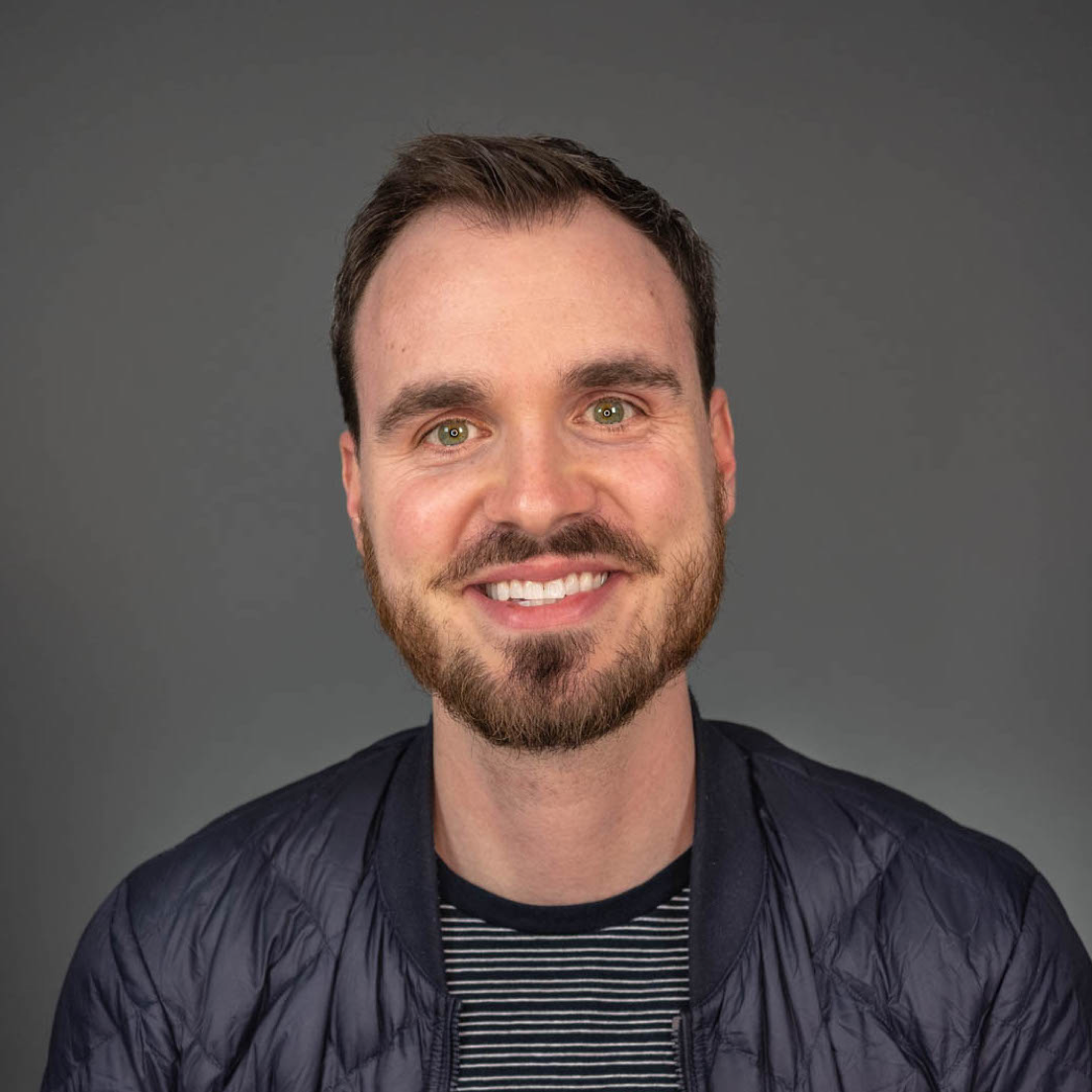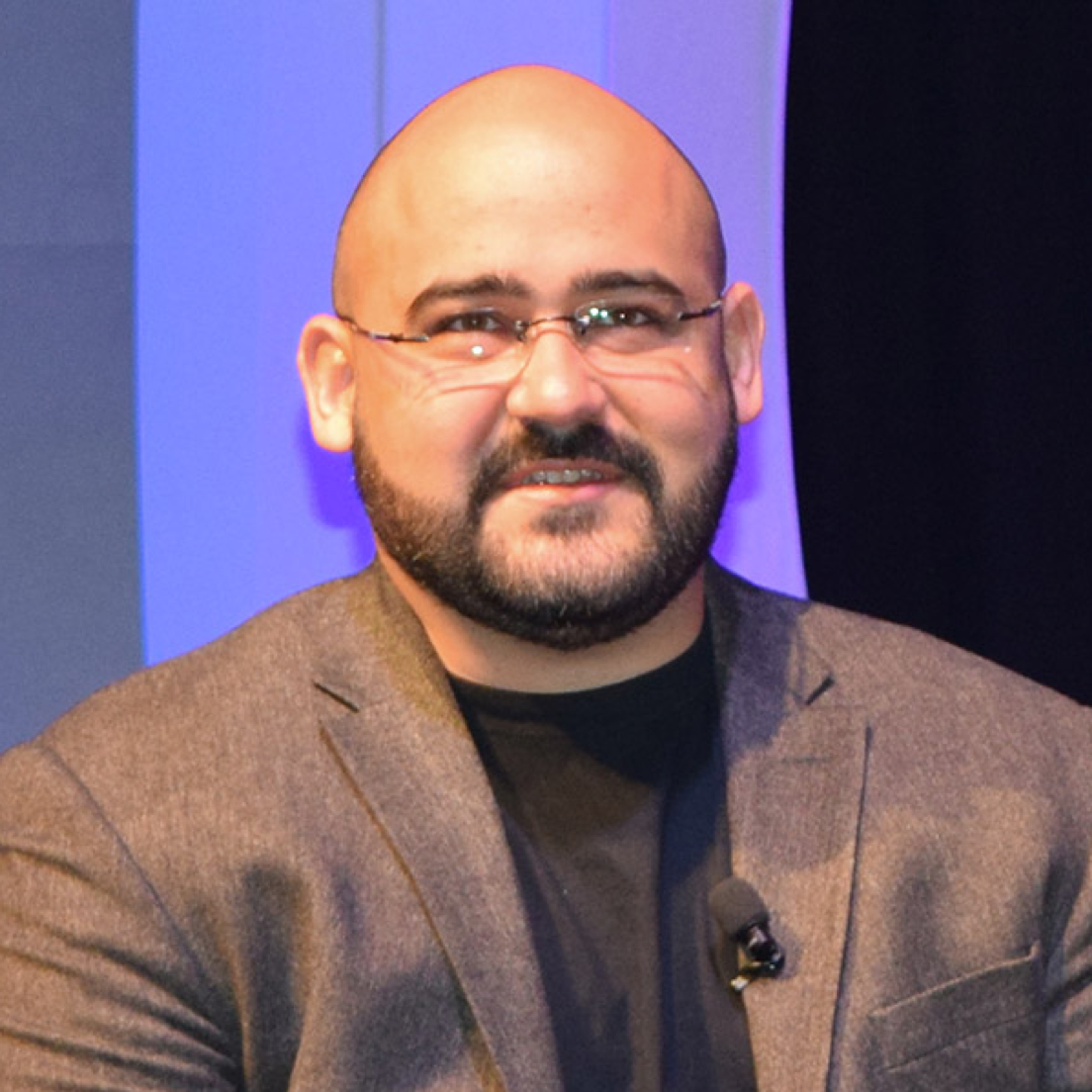About the episode
Jordan Woods is a product marketer at FullStory, a software company that helps designers and marketers create better digital experiences through session replay.
In this episode, Jordan chats with host Matthew Kammerer about creating and marketing lovable products. Learn how any marketer can influence product decisions, his best tips for creating landing pages that outperform, and the value of unexpected marketing campaigns like FullStory’s Engage Your Rage on Dribbble.
You can connect with Jordan Woods via Twitter.
Don’t have 30 minutes to spare? Jump ahead to key sections outlined below, or keep scrolling for a full transcript of the episode.
- [05:30] What is the relationship of product marketers to developers and other teams?
- [10:12] How do you decide whether a problem should be solved by marketing or a product change?
- [15:54] How can marketers overcome push back on product changes?
- [18:52] What mistakes do marketers keep making with landing pages?
- [24:33] How does marketing to designers differ from other audiences?
- [27:30] What’s your best advice for B2B marketers looking to grow in their careers?
"As a marketer, you need to harness your ability to tell really good stories."
Episode is brought to you by
-

Matthew Kammerer
Show Host -

Vanessa King
Producer -

Joshua Schnell
Producer
Show Transcript
Matthew Kammerer: How did you first get started in marketing?
Jordan Woods: Woods I took the circuitous route. I actually started my career in ad operations, which is sort of related. I was on the sell side for a publisher. So I took a job out of college with a company called Curiosity Media, they have a couple different properties in sort of different spheres.
One of them is a large Spanish language learning website and I was responsible for monetizing that site via ads. So that was kind of an introduction to the programmatic advertising landscape and then we had a couple of other products.
What had happened was we had identified a problem we were having on our site. Anyone that doesn't use an adblocker understands that there is a problem in the world of programmatic advertising with regards to controlling ad quality. And so we were having these issues on our website where all these ads would come through that we didn't want on our website.
And so we kind of formed a start-up within a start-up. We were only about 10 or 15 people I think at the time and we built a product that would essentially help monitor ad quality problems and then allow people to report on them. So end users and the idea was to sort of provide people a way to report on these issues without going to the extreme of maybe getting an adblocker. It was kind of a trying to preserve revenue streams if you will.
So when we built that, it kind of fell to me to start talking to people about it. So it was kind of this hybrid, you know sales, marketing and then gradually really became more of a marketing thing. We had a popular blog popular in the kind of the ad tech world, I should say, and started working a lot on some of the content for that and the distribution of that content and then working in just sort of all sorts of marketing type tasks.
So I sort of fell into it. It wasn't something I had really intentionally done and then when I sort of saw the writing on the wall with that, I saw this opportunity with FullStory, a company I had identified pretty early on as being really great technology and I wanted to work there.
It just so happened that they had a position that really aligned well with the past year's work that I've been doing. So, I continued my marketing journey at FullStory about two years ago or so.
Matthew: So you started on the buy side and transitioned to the sell side. Has that experience helped you in any way?
Jordan: Yeah, it's interesting in some ways. It's very similar. I think coming into marketing if you're going to do any paid acquisition, particularly, if you're doing a lot of PPC display ads, it's very helpful to have an understanding of the ad ecosystem.
I think that that was the biggest benefit for me is understanding things like DMPs and the difference between SSPs and DSPs and tons of acronyms. Basically, we love acronyms. So, I think that really helped in terms of kind of the overlap and the knowledge there.
But other than that I would say they are pretty different. I think I've developed some empathy for both sides, a little bit. Understanding what publishers want when you're trying to place ads on their site versus what buyers want in terms of optimal targeting and maximum flexibility and all that. So, I think that there's a lot that I've learned and kind of carried over from that.
Matthew: Can you give us a quick explanation of what FullStory does?
Jordan: FullStory provides high fidelity session replay. So we're a customer experience product. We really aim to make more optimal user experiences across the web. And so what that means is, if you're a marketer and you're trying to understand your landing page conversions and maybe why one page isn't converting, we aim to show you exactly what it is you need to do to fix that, what it is that people are actually doing if you're a UX Designer. Helping you see exactly how people interact with your designs. ThIngs like that. So it is really a company that strives to make a more optimal web experience through session replay.
Matthew: Product marketers are usually a lot closer to the development team than other types of marketers. What's that relationship like?
Jordan: We really celebrate this idea that new products or features or whatever can come from anywhere within the organization. We're all FullStory users. The marketing team does work really closely with our development team because I think we have a really good understanding of the competitive landscape. We have a good understanding of how our current customers use FullStory.
You know, I'd like to say, oh, it's all marketing, we're leading the charge on that. But the reality is our development team is talking to people. The marketing team's talking to people. We have all these different parts the organization that are speaking with customers and really looking at what is out there in terms of other tools and how people are approaching analytics and how people are approaching session replay in all these different areas.
So there is a closeness, but I wouldn't actually say that we as marketing necessarily occupy a special place above any other organization in terms of the way, we work with our engineering team.
Really, we just call it our product team because it's just so intertwined. So that's again something that might be very specific and particular to the way FullStory works and the way we work as a company. But it's a very democratized process in terms of, "Hey, there's this thing that we're noticing, you know, people are talking to us about this use case that we hadn't considered before are there things that we should be developing to amplify that use case. Is that the direction we should go?"
We have a number of organizational procedures that we go through to really champion an idea and take it from idea to a product launch. So that has been something that I've enjoyed a lot. I think everyone at FullStory enjoys that whether you're on sales or on the hugging team or wherever you are within the organization, your voice is pretty equally heard.
Matthew: So, do you have a specific example of something that's come about from seeing the user use the product in a way that you didn't expect bringing that to a full-featured portion of the application.
Jordan: I think we have several. I'm just thinking back about one of the things that we saw really early on is you would have vocal advocates for things like like heat maps.
So heat mapping software is popular for people that are analyzing a landing page or what have you, but there were things that we saw as naturally deficient about heat maps. They didn't really work well with Dynamic web pages and there are a whole host of issues that we saw.
We would constantly hear this feedback I just really wish I knew what people clicking on. Like, is there a visual way I could look at this and just see and understand it. And so as we talked more about that, this idea of Click Maps really blossomed. That was really the driving force behind the development of our Maps feature.
You have people that say, "I want heat Maps because of reason X Y or Z." And as you start digging into it more you realize that often times we use terminology we're familiar with or features we're familiar with as the only way to solve a problem. And the beauty of product development is you can sort of cut off the first part of that.
It's not so much like I want heat maps, it's I want to solve this problem. And then you assemble a fantastic team of product developers like the ones on our product team. Again, I'm I don't consider myself part of that because I don't think I've yet come up with a really fantastic idea, but these guys really have.
We have several things in the development pipeline that I can't actually speak to just yet. We have to await their launch, but there are several things that we're working on that dive into a specific use case. We realize that FullStory is good for a use case, but we could make it so much better by just taking it a couple steps further or tweaking a feature or developing a new feature. That's really exciting.
Matthew: How do you decide whether something should be solved by marketing, like content or landing pages, or if it needs to be solved by a product change?
Jordan: That's a fantastic question. I don't know to be honest with you. There are times where it's very obvious that a product tweak can help something.
I'll give an example. We knew there a ton of small companies that wanted to use FullStory. And for a long time FullStory's pricing model was not focused on them. And so no amount of marketing could persuade somebody that just had a very strict budget. So that was an example of something very obvious.
So we said, okay if we provide kind of some reduced feature set of FullStory but still provide a really great product, like the core FullStory product is still there, but it's more tailored to the needs of small shops. Then that's something that we could do in the product and that was when we launched FullStory free, which was just a version of FullStory that stripped out some of the pro features that weren't necessary for the really small shops and enabled them to use FullStory.
So that's a perfect example of something where it's obvious this is not a marketing problem or something that marketing can solve.
On the flip side, the analogy that I think of a lot is that a lot of companies nowadays are API first companies. I can think of a few like ClearBit or Zapier, where there's so much you can do with those tools. And I think that the challenge when you can do so many things like that is helping people understand like what they should do with them.
FullStory is not API first, we have an actual product. But I think about the challenge from a marketing perspective there of what happens when all the data in the world is available to you or what happens when you can plug this API into just about any platform and make it do something.
We felt this a little bit at FullStory where we have so much great data that the question is, how do you help people find the right ways to use FullStory? I remember a year or two ago talking to somebody who had had just gotten into FullStory and their first reaction was "Wow", and then the second one was like, "I don't know exactly what to do with this."
That wow factor is what you go for when you're developing software, but then the second question is a little bit more unsettling. The second reaction, which is, okay so there's a lot of data here. What do I do with it?
So many times while product enhancements could help people, when the data is already available that becomes more of a marketing challenge.
In fact, actually if you allow me an anecdote here, we were watching videos from Unbounce's CTA conference, which is fantastic. I highly recommend it. The videos are online. And during one of the sessions, I was really surprised because there was this marketer who's a big customer of FullStory.
She was presenting to this group of like 1700 marketers and she was extolling the virtues of using FullStory. It was fantastic. And then she said something like, "If you're a FullStory user, raise your hand." And in this this group of like 1700 people, I think there were like three.
That was another one of those moments where it was simultaneously like, oh that hurts, but it was also exciting as an opportunity. So we immediately got on the phone with this person, who by the way is one of our favorite people, her name's Dana Deeds. She runs an agency out of Canada called KickPoint. But she's a fantastic marketer, and we immediately scheduled a call with her and it was really clear to us that she was using FullStory to conduct conversion rate optimization audits.
She was using in a way that was so obvious and FullStory felt so tailor-made for it, and yet we ourselves on the marketing team really hadn't dug into that use case. And then we started talking to more agencies and that was one out of Manchester England. We did a webinar with them where they just basically opened their playbook of how they use FullStory for conversion rate optimization. And again, our minds were blown. This is sort of embarrassing, you know, like I'm on the marketing team. I work on this stuff.
This was so clearly a marketing opportunity. And I'm not saying that the product couldn't improve, we could absolutely add additional features. I'm sure we will add some to really help that conversion optimization use case for product managers and marketers.
But it was very clear that we were not yet effectively nailing the messaging and telling the story because as we started talking to more agencies and saying, you know, have you ever considered using FullStory for this, or as we talked to an e-commerce customer and say have you ever considered using FullStory for this? That was like a light bulb moment where they're like, "No. Oh, I hadn't thought of that."
And so that was one of the examples where we I thought, this is a great marketing opportunity and sure enough it was. We've now really honed in on that use case and that is reflected in a lot of the paid acquisition efforts. We do a lot of content that we write and produce in webinars and that will be something we'll continue to do.
Matthew: Do you have any advice for marketers who get push back on product changes?
Jordan: I would say that any organization that you work for should be compelled by data, right? We talk a lot about data driven marketing. That's not a novel idea. If you can present some really compelling data behind the change that you're advocating for it that is always helpful.
But I think in general being able to tell a story. So whether you are a content marketer or you're doing paid acquisition. For example, I'm not so much on the creative side of marketing. I know that my gift is not writing really pithy copy or telling fantastic stories, but I think everybody in marketing to some degree or another is trying to tell a story even if it's a micro thing, you know, you're trying to figure out what's the right copy to put on this ad or how do I match this ad to the landing page the user will arrive at?
So as a marketer you need to harness your ability to tell really good stories. I believe a lot in the power of narrative.
I'll just use again this example of conversion optimization. We talked internally about that and why we should build certain integrations. For example, that's a really good one which isn't I guess a product enhancement per se, but it absolutely takes engineering time and resources and does require a lot of volume internally.
But let's say you are just convinced that there is a certain integration that your customer would really benefit from. Being able to use FullStory in conjunction with this other tool or passing certain custom variables into FullStory that people can search on things like a test group and some sort of a testing platform.
I find it's really compelling to put together a couple of slides and to say, here's the data that supports this. We have X percentage of net new MRR every month is coming from a very particular kind of customer and from our user surveys, or whatever it is that you're doing qualitatively, you can say look these are the things that these people talk about and they care about and look these are the features they're using within our product.
That's really compelling and then taking that even further down the line and saying what are the ways that we're going to attract more of this customer or make our product stickier for this customer and ultimately increase the amount that they pay us. A lot of that again is I think just good storytelling. So utilizing your inherent your marketing skills, the things that make you a marketer, I think is really one of the best ways to do that.
And then of course it helps to work at an organization where ideas are judged on their merit not by who they come from. Anybody should be able to, as long as they follow that sort of approach of being able to have a rational reason for wanting to go down a certain path.
But I think that tying things back to revenue is always a winning strategy. Being able to say if we do this thing, we predict we'll see an increase in Revenue by X percent.
Matthew: Say you're sitting down to create a landing page for an ad campaign. What are some secret tips you have for a really high converting landing page?
Jordan: I'm actually pulling out some of our some of our landing pages to be able to talk a little bit about what we've done with them. I think that we've tried a number of different things.
We found that there's so much that will determine the success of a landing page. Most people when they're creating landing pages say there should be an emphasis on where's the traffic coming from.
That's the first thing we always look at. We've seen the same landing page perform really well when we we're driving a lot of AdWords traffic to that landing page versus not so well when we were testing a new channel or something like that. That's a big part of it.
Maybe I would even step back a little bit and say the thing that has been the most important for us more so than even the language on the landing page is ensuring that end-to-end your messaging is clear and consistent.
When you're doing any sort of the PPC type campaigns and you're looking for new trials or what have you, there can be this tendency to say we've got this existing landing page that I think can work for this customer even though it's not exactly who we designed it for.
Right when you start making those decisions, I think you're at risk of seeing a really really challenging conversion experience. Because if the copy you're leading with is something like, improve your user experience with company X Y or Z, the person clicks on it and then you're just greeting them with a sign up now for a free account of this product you've never heard of.
There is this really weird gap in understanding. Somebody arrives there and just immediately thinks, "What?" So I think first of all it's the copy that you lead with and whatever your ad campaign is. It really needs to make sense with the landing page goes within that.
I mean, I feel like that's kind of like a 101 thing but I'm also surprised by how often that isn't the case. And again we've experienced that on our end. The other thing that we've really liked is if you have a complex product or a product where you feel like explaining it is something you haven't maybe figured out just yet or like there's an element to it you're just that you find questionable. One of the things that we really like doing is inserting video into our landing pages. So we use Wistia, and Wistia has some really great tools to see at what points people are dropping off.
And so when we launched FullStory free, we had really high quality organic-ish traffic. I say organic because we didn't pay for it, we had a really successful ProductHunt launch. And so you had all these people that were clicking on our product listing that day that were obviously interested in the product.
So that being said, we knew that would naturally perform a little bit better just because people had intent when they got there. We weren't selling into some sort of an interruption with a display ad but they got there and it was really fascinating to watch how many people were clicking on this video against we what we were using FullStory. It's kind of meta. We were using FullStory on the FullStory landing page to see exactly where people were clicking on the page and to also watch sessions of people that are interacting with our landing page for the first time.
That is something that we find to be important. See exactly how people are using that landing page and how they're interacting with it. One of the things that we do is put a filter in FullStory on that basically says someone has hit this landing page and bounced in less than 3 seconds or something like that. Right? That's a really good indicator that you're not nailing it. You're not quite there in terms of your landing page. If you have a ton of users that are hitting on any page and then just immediately leaving that's a good indicator they're either accidentally clicking an ad or that your ad and your landing page just don't quite make sense together.
So, going back to this example of a video. It's a really nice way to quickly put something up that allows people to learn about the product and then, for us, it's a really nice way to learn about how long people are actually watching and how relevant is the content in the video to them? Does it answer the questions they want?
Some of these videos again like for FullStory free, I don't remember exactly the completion rate, but it was really really high and that correlated strongly with signups when people were actually watching the video all the way through.
We saw crazy number of signups. And again a lot of leg work went into making sure information on the front end of that was relevant. When people were going to ProductHunt or when they saw some of BuySellAds ads, a lot of those were native placements that were were like content placements that talked about FullStory and talked about FullStory free.
So again, consider where your traffic is coming from. In those instances we knew ProductHunt, we knew articles, we knew all these places that were content heavy were going to drive traffic to our free landing page. As a result of that, we knew we didn't need to make it a super long landing page. We threw up a video, threw up a really easy call to action with an email address form, and that was it. I mean that was really all we needed.
But again, I would emphasize and say that over time what we've learned from looking at these is you need to consider how much information they're getting before they ever get to that landing page. If it's a display ad and nothing else, you probably need to do a lot of informing on that landing page depeending on what your call to action is. Maybe it's just a display ad to download an e-book and in that case it's probably not that much. But if you're trying to inform them all about your product as though they had never heard of it before, that's a longer landing page and frankly, it's a harder landing page.
I think it's really nice to inform people ahead of time and that can be done again through forms of content and things like that. So when they arrive they sort of know and they can just sign up.
Matthew: What tips do you have for people who are advertising specifically to designers?
Jordan: One of them is design pretty ads. That's goes without saying, but if you're worried about an audience that's going to be critical about their first impression of your products, make sure that your product and the ads that are are supporting it look good.
It's such a basic one. And I know that it's like an embarrassment of riches because we have now actually a second designer on our marketing team, but our existing one is so good and we just love the stuff he puts out. We are never really worried about that, but it could be something that could probably make or break your product in the eyes of designers.
To the extent that you can control what your product looks like, that's something you should definitely work on too. But if you can't at least make the ads look good...
And then the other thing I would just say is designers can be tough because depending on your product the amount of money that you put into acquiring them changes. You just have to be really judicious with budgets and how creative you can get to reach them because depending on the audience, you know, if you have a really expensive enterprise product and you're reaching a design community, that is primarily freelancers there is probably not a great fit.
Even if you feel like the product itself is the right thing for them to use, you have to consider the fact that there is a huge freelance community and there a lot of designers that are working at agencies or that are doing their own thing. So being aware of where they work and kind of what capacity is really important. Which again, is one that we've learned and it's sort of an odd suggestion, but it's one that I think we've learned as we've gone the FullStory Pro and the FullStory free route, we saw a ton of adoption of FullStory free from designers.
That's largely because they wanted to test it and put it on their own design portfolio page. And that was one of the ways that they opted to use FullStory. And so having a free version of FullStory was really, really effective but it also made it important for us to be considerate in terms of the costs and how much we're willing to spend to acquire that specific audience.
But it's not that we don't want them. We just had to look for other ways like email or tapping into Dribbble meetup groups. For example, we've sponsored some of those, we've put on our own design meetings, we have literally traveled all over the world just to get to design-oriented meetings and spread the word that way because the beauty of the design community is that there are a lot of people that hold a lot of influence and there is a lot of talk.
A lot of people are very familiar with the top designers in those communities, so if they are preaching the goodness of your tool, that is a fantastic way to get into those communities. You have to find this weird balance between intense acquisition efforts that require a lot of ads and then also finding ways to sort of stoke that word of mouth flame.
Matthew: What's your best piece of advice for B2B marketers looking to grow in their careers?
Jordan: You know, it's funny. I've never really liked it advice because I feel like it's often so particular to the person's situation, it might not be useful for everyone. So I try to give very generic advice that I think everyone can benefit from.
So the first one I would just say is don't stop learning ever. That's the thing I have to coach myself on. It's just never be comfortable with where you are. Technology is changing so quickly. And there's just so much to learn and it can be intimidating at times. That's why I think being a t-shaped marketer is really good, is having a depth of experience in some areas and then being pretty flexible, especially if you want to work at a startup or you're interested in being kind of an early member in a team.
I think it's a very valuable to know enough to be dangerous. But then also to know exactly where your limits are. To say, this is the point in which we need to bring on somebody else to help handle this and that can be a really painful experience but a necessary one as a company grows.
So yeah, I think continue to learn. Then just the last one it's sort of just a life thing, which is sometimes it can be important to take a step back and say like, there's so much more to life than marketing.
And I know that's probably counter-intuitive because we're talking about marketing right now. But there's a lot of stress associated with work and all that, and it's good to just remember there are bigger things going on in the world than our tiny spheres of marketing and so it can be a humbling experience.
So sort of step back, take a deep breath and say, "You know, I'm experiencing a lot of stress but really there's more to life than just what I'm doing right now." you know, I don't think any one of us is going to say on our deathbed, "Man, you know, I really should have optimized that one campaign."
So again, it's humbling. It also makes me realize that I probably, at times, take myself too seriously or the work that I'm doing too seriously, and the reality is this should be fun. It should be an experience that shouldn't be your life. You know, it's good to have work-life balance.
Matthew: And where can listeners connect with you?
Jordan: You know, it's funny. Again, really bad marketer here. I have pretty much weaned myself off of almost all social media. I am at @JordanJWoods on Twitter. However, you'll be disappointed because most of my tweets are like nonsense but I'm also jordan@fullstory.com. I'm always happy to say answer marketing related questions and things like that. And if you're ever in Atlanta, maybe you'll see me on the streets. Who knows.


